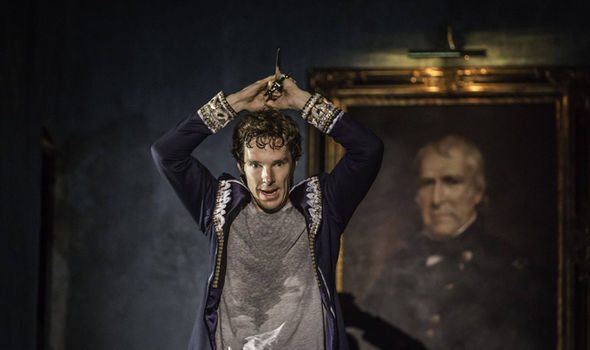‘Hamlet’ at the Barbican – ‘Too much madness, not enough method’
One of the most widely anticipated productions of the year, the Barbican’s Hamlet has been inundated by frenzied coverage across the media, largely thanks to the hysteria surrounding its illustrious star, Benedict Cumberbatch. From the record-breaking ticket sales to its controversial decision (and subsequent U-turn) to place the play’s famous “to be or not to be” soliloquy during its opening scene, the plagued production has been contentious from its inception.
It is perhaps inevitable that a performance so anticipated by the public should be somewhat disappointing but reviewers have been premature in judging director Lyndsey Turner and her creative team. The Times in particular exemplifies the reactionary backlash, having broken the traditional review embargo by publishing a scathing two-star review when the play had barely begun its previews. I saw the play two weeks into its official run and although it was far from perfect, it was nothing like the slapdash image that certain reviewers had painted.
Hamlet is intimately concerned with self-destruction, a theme to which Turner’s production pays close attention. Prison-like, the court smothers its inhabitants and traps them within its conventions, in contrast to the itinerant bodies of the servant class that shift continuously about the stage.
The nomadic sole-survivor Horatio (Leo Bill), dressed here in shabby backpacker chic, also escapes acting as another figure of relative mobility and a symbol of the freedom Hamlet (Benedict Cumberbatch) has left behind in Wittenberg.
Yes, this is a story of the prince’s suicidal nature, and how our own actions damn us, but also of the destruction of Denmark’s government from within. This is one area in which this production shines, but in no other aspect does it excel more than in its central performance.
Cumberbatch plays the character with restraint, shying away from the cold, brooding asperity we know he can do so well. Instead he depicts Hamlet as a multi-faceted individual, who is in turn warm, quiet, and melancholic. To Turner’s production Hamlet is (at heart) a good man- or at least one with the potential to be.
Fortinbras (Sergo Vares) remarks at the play’s close that Hamlet could have been a good leader for his people, and he was well-loved by Horatio and the troupe of travelling actors. But are we supposed to believe that he is simply “a little shy and sad of eye, but very wise”, as the eerie strains of Nat King Cole’s Nature Boy inform us in the play’s haunting opening scene? Moreover, should we believe this of him?
An overly sympathetic eye towards Hamlet has ultimately hampered the play’s overall power, primarily by ignoring the vitriolic and often violent misogyny at the heart of his character. Hamlet’s hatred of women could have seemed like an interesting foil to his otherwise gentle nature, an essential character flaw that sows the seeds of his ultimate destruction. However, several attempts to create additional sympathy for the titular character undermine the subtlety of Cumberbatch’s portrayal.
The initially loving scenes between Ophelia and Hamlet before he commits to his father’s revenge feel crass and shoe-horned in and his Oedipal obsession with his mother’s sexuality is stripped back in favour of a cold and stilted relationship between Gertrude and Claudius (Anastasia Hille and Ciarán Hinds).
The allure of Hamlet’s character lies in his ability to be both sympathetic and abhorrent, a sentiment which could have been better achieved had Cumberbatch been allowed room to breathe in the character.
Herein lies the problem of the Barbican’s Hamlet as a whole- its disparate elements do not work in connection with each other. Cumberbatch’s performance is magnetic, yes, but does not fit the cluttered, chaotic production which attempts to include too many tricks instead of facilitating the natural talent of its stars and the beauty of the text
Some aspects do work, for example the dramatic explosion of rubble that fills the decaying Danish palace is suitably shocking. Yet the oversized toy-sets, unexpected dance sequence and frankly racist inclusion of a Native American headdress amidst a chest of child’s dressing up toys all weaken the otherwise beautiful set design by Es Devlin. Gimmicks are favoured over character, and make Hamlet’s “antic disposition” seem somewhat contrived, rather than convincing.
A little too much madness and not enough method, the Barbican’s Hamlet is an enjoyable but uneven production, despite a strong performance of its eponymous antihero.
Simultaneously reliant on its central star and a hindrance to his abilities, this production is unpredictable – stellar at times, bizarre at others. It is, however, memorable and possesses a boldness of spirit for which the cast and creative team should be admired, if not always for the execution of that boldness.

Comments